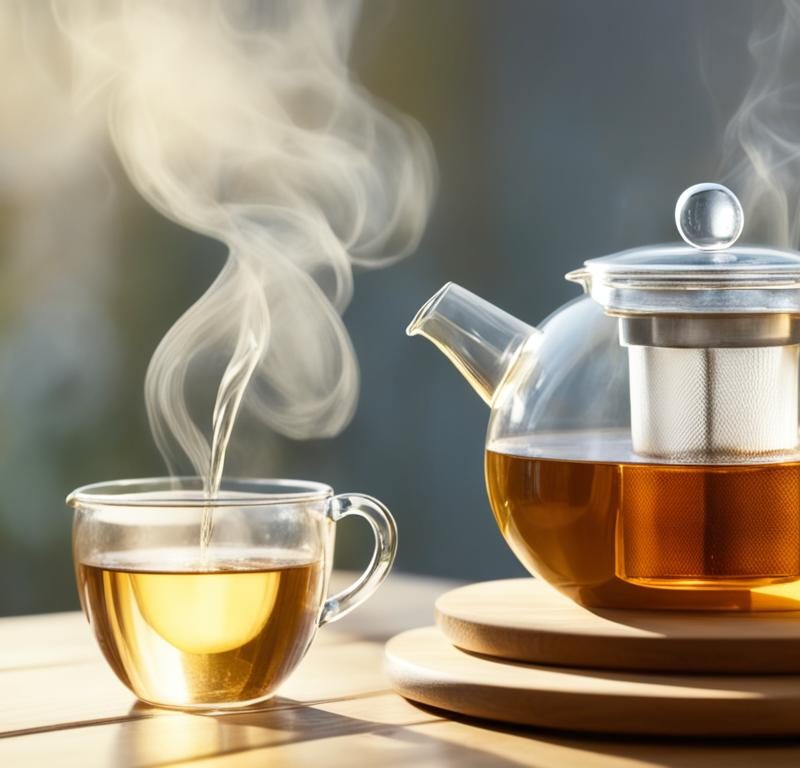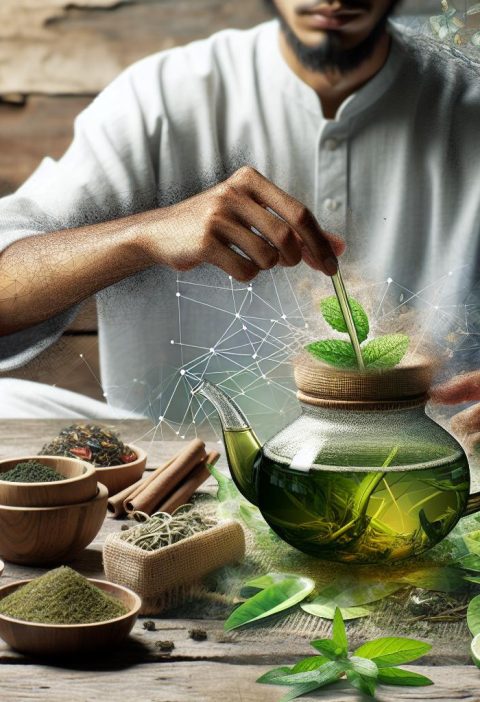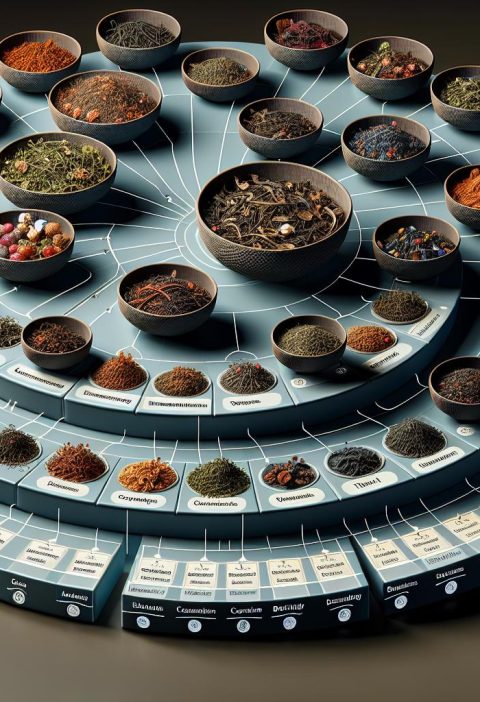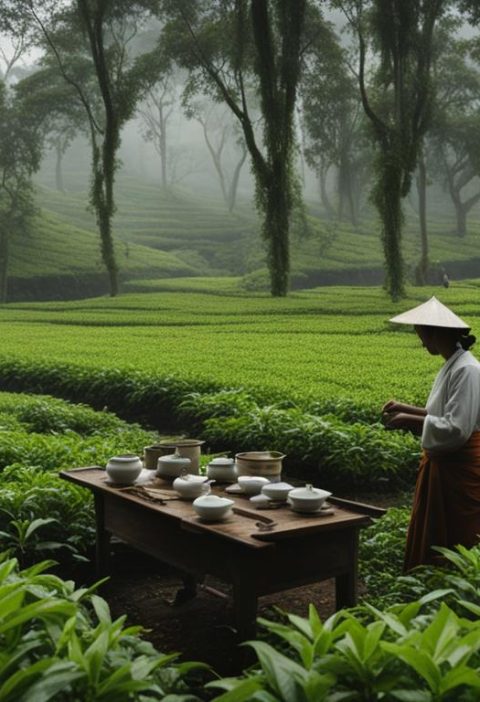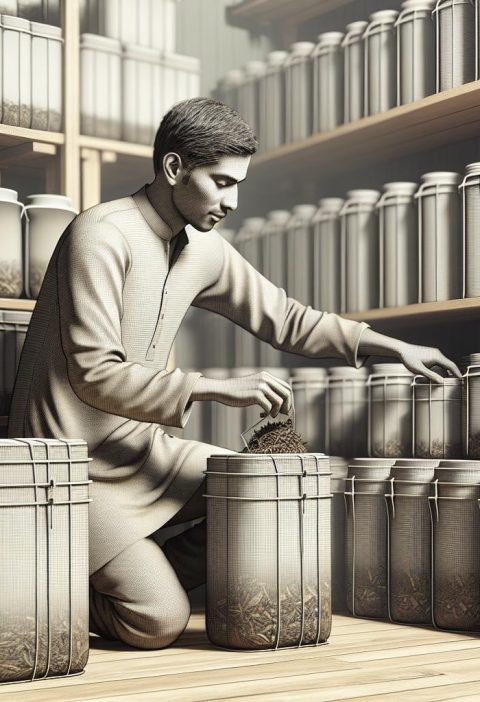Steeping tea is an ancient art that has been perfected over thousands of years. Knowing how to steep tea correctly is an important skill to learn. Follow these guidelines for a step-by-step ritual of tea steeping:
Heat Your Water
– Use filtered, spring, or bottled water for the best results.
– Fill your tea kettle with fresh, cold water and bring it to a rolling boil.
– Adjust the water temperature based on the type of tea you are using. Green and white teas require slightly lower temperatures to avoid burning the delicate leaves.
Time Your Steeping
– Pour the heated water over the tea and cover it.
– Experiment with different infusing times to find your ideal taste. Be careful not to steep for too long to avoid bitterness.
Enjoy Your Tea
– Remove the tea bag or infuser or use a tea strainer for loose tea leaves.
– Let the tea cool for a moment before sipping to fully appreciate the nuances and flavors.
Tips for Tea Steeping Success
– Avoid using the microwave to heat water for tea.
– Pour boiling water over the tea leaves instead of adding leaves to hot water.
– Ensure the tea infuser is fully submerged while steeping for proper flavor extraction.
– Remove the tea bag or infuser as soon as steeping is finished to prevent over-steeping.
– Avoid squeezing tea bags during steeping to prevent bitterness.
– Preheat your teapot to prevent cracking by pouring hot water into it before steeping.
Steep Times for Different Tea Types
– Black tea: 3 to 5 minutes
– Green tea: 1 to 2 minutes
– White tea: 2 to 3 minutes
– Oolong tea: 2 to 3 minutes
How to Prepare Loose Leaf Tea
– Use a teapot, tea infuser, or tea filter for loose leaf tea.
– Adjust steep time based on the specific type of tea.
– Use slightly cooler water for green, white, and oolong teas compared to boiling water for black tea.
Why Steep Time Matters
– Longer steeping time results in stronger tea, but be cautious of bitterness.
– Shorter steeping time may result in a milder, weaker cup of tea.
Health Benefits of Tea
– Tea has been linked to lower risk of cancer, heart disease, stroke, and diabetes.
– Tea contains caffeine, polyphenols, and antioxidants that offer various health benefits.
– Different tea types have different health benefits, such as white tea for blood vessel health and black tea for bone health.
Serving Sizes and Additives
– There is no specific daily recommendation for tea consumption, but 2 to 10 cups per day is generally safe.
– Be mindful of adding sugar and other flavorings to tea, as they can add unnecessary calories and reduce the health benefits.
– Lemon can enhance the flavor of tea without adding extra sugar.
Conclusion
Steeping tea properly is a skill that can be learned and enjoyed. By following proper techniques and adjusting steeping times, you can unlock the full flavor and health benefits of tea. Experiment with different teas and find your own preferences to make the perfect cup of tea every time.
Key Takeaways:
- Use filtered or bottled water for the best results when steeping tea.
- Adjust the water temperature based on the type of tea you are using.
- Experiment with different infusing times to find your ideal taste.
- Remove the tea bag or infuser as soon as steeping is finished to prevent over-steeping.
- Tea has various health benefits, including lower risk of chronic diseases.
Heat Your Water
When it comes to steeping tea, the quality of the water plays a crucial role in bringing out the flavors and aromas of the tea leaves. Follow these steps to heat your water for the perfect cup of tea:
- Use filtered, spring, or bottled water for the best results. Tap water may contain impurities that can affect the taste of your tea.
- Fill your tea kettle with fresh, cold water. Starting with cold water allows the flavors to properly develop during the heating process.
- Bring the water to a rolling boil. This ensures that the water is hot enough to extract the desired flavors from the tea leaves.
- Adjust the water temperature based on the type of tea you are using. Different teas require different water temperatures to avoid burning the delicate leaves. For example:
| Tea Type | Water Temperature |
|---|---|
| Black Tea | Boiling water (212°F / 100°C) |
| Green Tea | Steaming hot water (170°F / 77°C to 180°F / 82°C) |
| White Tea | Hot water (160°F / 71°C to 170°F / 77°C) |
| Oolong Tea | Hot water (180°F / 82°C to 200°F / 93°C) |
By using the right water and heating it to the correct temperature, you’ll ensure that your tea is steeped to perfection, resulting in a delightful and flavorful cup every time.
Time Your Steeping
Now that we’ve covered how to heat your water, let’s move on to the next crucial step in the tea steeping process: timing. The ideal steeping time plays a significant role in determining the flavor and aroma of your tea.
Once you’ve poured the heated water over the tea leaves or tea bag, it’s important to cover it to retain the heat and allow for proper infusion. This helps to extract the desired flavors and elements from the tea leaves or herbal blend.
But how long should you steep your tea? The answer isn’t universal and varies depending on personal preference and the type of tea being steeped. Experimenting with different infusing times is essential in finding your perfect cup of tea. However, be mindful not to steep for too long as it can lead to a bitter taste.
Recommended Steeping Times for Different Tea Types
| Tea Type | Steeping Time |
|---|---|
| Black Tea | 3 to 5 minutes |
| Green Tea | 1 to 2 minutes |
| White Tea | 2 to 3 minutes |
| Oolong Tea | 2 to 3 minutes |
These are general guidelines and can be adjusted based on personal preference. Some tea enthusiasts may prefer a shorter or longer steeping time for their individual taste preferences. Remember, the steeping time may impact the strength and flavor profile of your tea, so it’s essential to find the ideal balance.
Enjoy Your Tea
Now that your tea is steeped to perfection, it’s time to sit back, relax, and enjoy the delightful experience of sipping tea. Here are a few tips to enhance your tea drinking enjoyment:
- Remove the tea bag or infuser from your cup or teapot, or use a tea strainer for loose tea leaves. This ensures that you won’t accidentally over-steep your tea.
- Allow the tea to cool for a moment before taking your first sip. This allows the flavors to fully develop and harmonize, giving you a richer and more nuanced taste.
As you take that first sip, let the warm, comforting brew envelop your senses. Notice the subtle aromas and flavors dancing on your palate. Feel the relaxation and tranquility that tea brings. Whether you’re enjoying a cup alone or sharing a tea moment with loved ones, sipping tea is a simple yet profound pleasure.

Tea has a way of bringing people together, fostering connection and conversation. Take the time to savor each sip, allowing yourself to be fully present in the moment. Experience the soothing effects of tea as it calms your mind and warms your heart.
So go ahead, grab your favorite cup or mug, find a cozy spot, and indulge in the pleasure of tea drinking. Let tea be your companion on quiet mornings, busy afternoons, and peaceful evenings. Embrace the ritual, the flavors, and the joy that tea brings into your life.
Tips for Tea Steeping Success
To ensure a perfect cup of tea every time, follow these essential tea steeping tips and beginner-friendly techniques:
- Avoid using the microwave to heat water for tea.
- Pour boiling water over the tea leaves instead of adding leaves to hot water.
- Ensure the tea infuser is fully submerged while steeping for proper flavor extraction.
- Remove the tea bag or infuser as soon as steeping is finished to prevent over-steeping.
- Avoid squeezing tea bags during steeping to prevent bitterness.
- Preheat your teapot to prevent cracking by pouring hot water into it before steeping.
By following these tea brewing techniques, you’ll be able to achieve optimal flavor and aroma in your cup of tea. These tea steeping tips are especially useful for beginners looking to enhance their tea brewing skills.
Keep in mind that different types of tea require different steeping methods, so it’s essential to experiment and find the perfect steeping time and water temperature for each tea variety.
Tea Steeping Tips in Action
Let’s take a closer look at each of these tea steeping tips:
| Tea Steeping Tip | Description |
|---|---|
| Avoid using the microwave to heat water for tea | Heating water for tea in the microwave can lead to uneven water temperature and affect the taste of your tea. It’s best to use a kettle or stovetop to heat water for tea. |
| Pour boiling water over the tea leaves | Adding tea leaves to hot water can result in inadequate flavor extraction. Pouring boiling water over the tea leaves ensures that the leaves fully infuse and release their flavors. |
| Ensure the tea infuser is fully submerged | When using a tea infuser, make sure it is fully submerged in the water to allow for proper flavor extraction. This ensures that the tea leaves are in contact with the hot water, resulting in a well-rounded brew. |
| Remove the tea bag or infuser as soon as steeping is finished | Leaving the tea bag or infuser in the water for too long can lead to over-steeping and a bitter taste. Remove the tea bag or infuser as soon as the recommended steeping time is completed. |
| Avoid squeezing tea bags during steeping | Squeezing tea bags can release tannins and bitterness into your cup. Instead, gently remove the tea bag without squeezing to ensure a smoother and more enjoyable flavor profile. |
| Preheat your teapot | Preheating your teapot with hot water before steeping helps maintain the optimal temperature and prevents the teapot from cracking due to sudden temperature changes. |
These valuable tea steeping tips will guide you in creating the perfect cup of tea, whether you’re a beginner or a seasoned tea enthusiast. By paying attention to the details and practicing proper tea brewing techniques, you’ll be able to unlock the full flavor potential of your favorite teas.
Steep Times for Different Tea Types
Proper steeping times are crucial to extract the full flavor and aroma from different types of tea. Here are the recommended steeping times for popular tea varieties:
| Tea Type | Steeping Time |
|---|---|
| Black tea | 3 to 5 minutes |
| Green tea | 1 to 2 minutes |
| White tea | 2 to 3 minutes |
| Oolong tea | 2 to 3 minutes |
Remember, steeping times may vary depending on personal preference and tea quality. Start with the recommended times and adjust as desired. Experimentation is key to finding your perfect cup of tea.
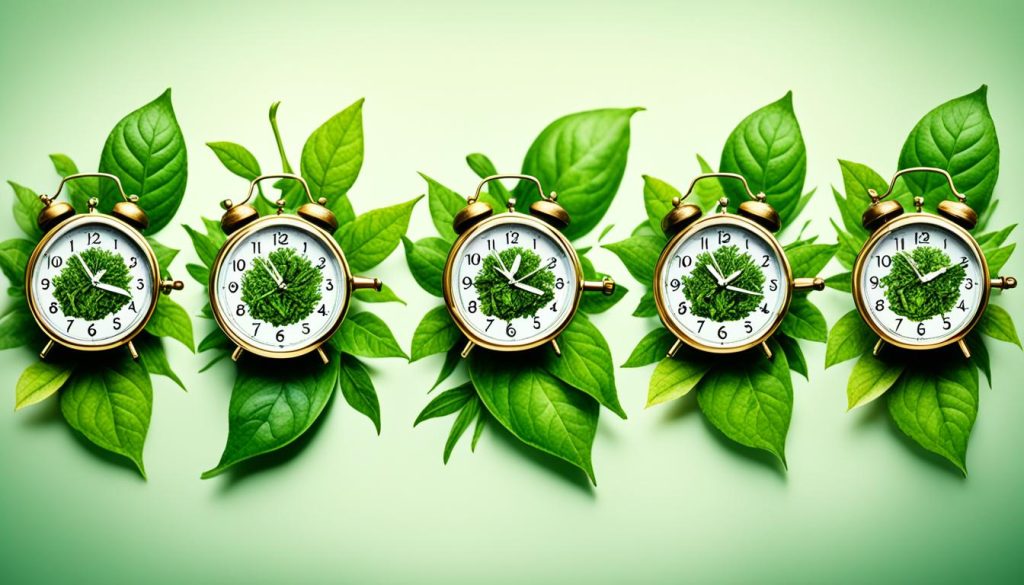
With these steeping times in mind, you’ll be able to steep your black, green, white, and oolong teas to perfection. Enjoy the unique flavors and aromas that each tea type has to offer!
How to Prepare Loose Leaf Tea
When it comes to preparing loose leaf tea, there are a few key steps to keep in mind. By utilizing the proper tools and techniques, you can ensure that your loose leaf tea is steeped to perfection. In this section, we will guide you through the process of preparing loose leaf tea.
- Choose the Right Equipment: To prepare loose leaf tea, you will need either a teapot, tea infuser, or tea filter. These tools allow the tea leaves to steep freely, ensuring maximum flavor extraction. Choose the option that best suits your preference and convenience. (Keyword: preparing loose leaf tea)
- Adjust Steep Time: The steep time for loose leaf tea will vary depending on the specific type of tea you are using. Refer to the packaging or instructions provided with your tea for recommended steeping times. This ensures that you extract the optimal flavor from the tea leaves. (Keyword: loose leaf tea steeping)
- Water Temperature: When brewing loose leaf tea, it’s important to use the correct water temperature. While black tea generally requires boiling water, green, white, and oolong teas benefit from slightly cooler water. This prevents the delicate flavors from being overshadowed or compromised. (Keyword: brewing loose leaf tea)
To visualize the steeping times for different types of loose leaf tea, refer to the table below:
| Tea Type | Steep Time |
|---|---|
| Black Tea | 3-5 minutes |
| Green Tea | 1-2 minutes |
| White Tea | 2-3 minutes |
| Oolong Tea | 2-3 minutes |
Now that you know how to prepare loose leaf tea, you can confidently enjoy a flavorful and aromatic cup of tea. Experiment with different teas and steeping times to discover your perfect brew. Happy tea steeping!
Why Steep Time Matters
In the art of steeping tea, the steep time plays a crucial role in determining the flavor and strength of your cup. Understanding the importance of steep time and its effects on tea flavor is essential for achieving the perfect brew.
Longer steeping time results in a stronger infusion, as it allows more time for the tea leaves to release their flavors and aromas. However, longer steeping can also lead to bitterness, especially with certain types of tea.
Conversely, shorter steeping time may result in a milder and weaker cup of tea. Some teas, such as green and white teas, require shorter steeping times to avoid overpowering the delicate flavors and to maintain a smooth taste.
To help you navigate the intricacies of steep time, here’s a breakdown of recommended steeping times for different tea types:
| Tea Type | Steeping Time |
|---|---|
| Black Tea | 3 to 5 minutes |
| Green Tea | 1 to 2 minutes |
| White Tea | 2 to 3 minutes |
| Oolong Tea | 2 to 3 minutes |
Remember, these are general guidelines, and you can adjust the steeping time based on personal preference. Experimentation is key to finding the perfect balance of flavor and strength for your taste buds.
Health Benefits of Tea
When it comes to promoting overall health and well-being, tea is a beverage that offers a myriad of benefits. From reducing the risk of chronic diseases to providing essential antioxidants, tea has become a go-to choice for health-conscious individuals. Let’s delve deeper into the health benefits that tea has to offer.
Cancer Prevention
Studies have shown that tea consumption may help lower the risk of certain types of cancer. The antioxidants found in tea, such as catechins and polyphenols, have been found to possess anti-cancer properties. Regular consumption of tea, particularly green and white tea, has been associated with a decreased risk of developing cancer.
Cardiovascular Health
Drinking tea has also been linked to a decreased risk of heart disease and stroke. The flavonoids and antioxidants present in tea help improve cardiovascular health by reducing inflammation, lowering cholesterol levels, and improving blood vessel function.
Diabetes Management
Tea can be a valuable addition to a diabetes management plan. It has been shown to improve insulin sensitivity and regulate blood sugar levels, thereby reducing the risk of developing type 2 diabetes. Green tea, in particular, has demonstrated promising results in managing blood sugar levels.
Antioxidant Powerhouse
Antioxidants are essential for combating free radicals, which can cause cellular damage and contribute to the development of chronic diseases. Tea is packed with antioxidants, such as epigallocatechin gallate (EGCG), that help neutralize free radicals and protect the body against oxidative stress.
Specific Health Benefits of Different Tea Types
Although all teas provide health benefits, different types of tea have unique properties that offer specific advantages. For instance, white tea is known for its ability to support blood vessel health, while black tea has been associated with improved bone health. Incorporating a variety of teas into your daily routine can maximize the health benefits you receive.
Serving Sizes and Additives
When it comes to enjoying tea, understanding serving sizes and using additives can enhance your experience. Let’s explore some important considerations.
Serving Sizes
While there is no specific daily recommendation for tea consumption, enjoying 2 to 10 cups of tea per day is generally considered safe. However, it’s essential to listen to your body and consume tea in moderation.
Tea Additives
When adding flavor or sweetness to your tea, it’s crucial to be mindful of the additives you choose. While some additives can enhance the taste, others may add unnecessary calories and potentially diminish the health benefits of tea.
Sugar in Tea: Adding sugar to your tea can be a personal preference, but it’s important to be aware of the potential effects on your overall calorie intake. If you’re looking for a healthier alternative, consider natural sweeteners like honey or stevia.
Lemon: Adding a slice of lemon to your tea can enhance the flavor without adding extra sugar. It also provides a refreshing twist and a touch of brightness to your cup.
| Additive | Description |
|---|---|
| Sugar | Adds sweetness but can increase calorie intake. Consider healthier alternatives. |
| Lemon | Enhances flavor without adding extra sugar. Provides a refreshing twist. |
Experiment with different additives to find your preferred taste while keeping in mind the health aspects of your tea drinking experience. Each tea lover has their own unique preferences and discovering the perfect combination of additives can elevate your tea enjoyment.
Conclusion
Steeping tea properly is a skill that can be learned and enjoyed. By following proper techniques and adjusting steeping times, you can unlock the full flavor and health benefits of tea. Experiment with different teas and find your own preferences to make the perfect cup of tea every time.
